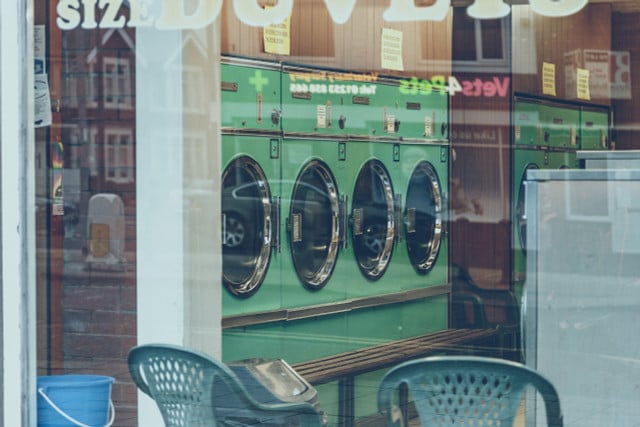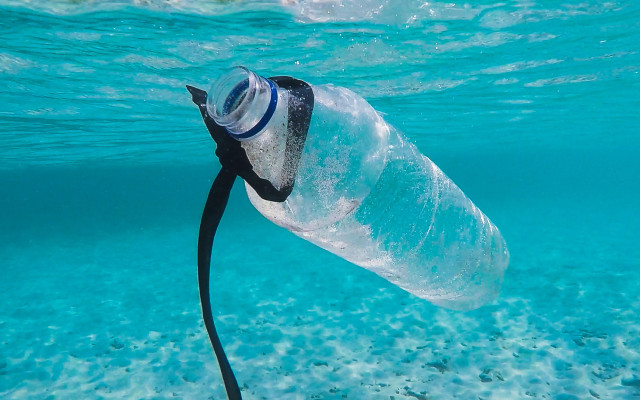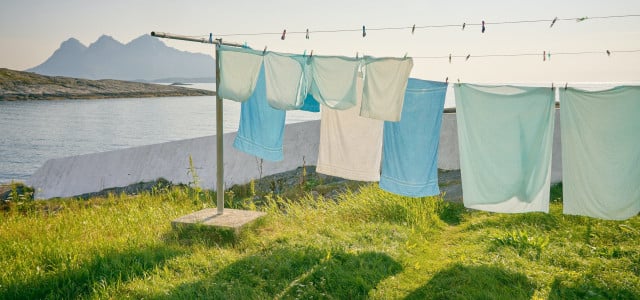Learning how to clean your microfiber cloths will help you keep them intact and functional for longer. We’ll share our best tips for washing, drying, and caring for your microfiber cloths – and show some alternatives.
If you use microfiber cloths, you don’t have to wash them after each use. In fact, it’s best not to wash them too often. There are a few things you should keep in mind – we’ll explain what they are here.
Microfiber: What You Need to Know
- Microfiber cloths consist of countless extremely thin fibers. The individual fibers are many times finer than a human hair.
- These fine fibers create a large surface area, which helps clean surfaces particularly thoroughly. The tiny cavities between the individual fibers are great at capturing and holding on to dust particles.
- Microfiber cloths are exceptionally soft and and good at retaining their shape.
- Microfibers can be made of natural or synthetic materials. Many manufacturers use their own trademarks to refer to their synthetic fibers.
How to Clean an Extra Dirty Microfiber Cloth
If your microfiber cloth is very dirty, you can clean it by hand or in the washing machine.
Washing a microfiber cloth by hand:
- Fill a bucket or small laundry tub with lukewarm water and a small amount of detergent or soap.
- Soak the microfiber cloth in the mixture for an hour or so.
- Squeeze the cloth well with your hands. Caution: Avoid rubbing the fibers against each other. This will help prevent them from breaking.
- Rinse the cleaning cloth with clean water to remove detergent residues.
- Squeeze the water out of the cloth gently but thoroughly. Caution: Don’t wring out your microfiber cloth. This can cause the fibers to break.
- Hang your clean cloth up to dry.
Washing a microfiber cloth in the washing machine:
You can wash your microfiber cloth in the washing machine with detergent as follows:
- If you want to wash the microfiber cloth together with the rest of your laundry, you should put it in a laundry bag. This will prevent the microfibers from picking up lint.
- It’s better to wash microfiber cloths separately, but this isn’t very ecological if you only have a few of them!
- To extend its life, wash your microfiber cloth on the cold or warm temperature setting on your washing machine – even if the manufacturer says higher temperatures are OK.
- Do not use fabric softeners when washing microfiber cloths in the washing machine. They contain greasing agents which adhere to the microfibers. This impedes the absorption of moisture and dirt and thus the function of the cloths.
Cleaning Microfiber Cloths: Less is More

One of the reasons microfiber cloths are so popular is because you can clean with them using little or no detergent. The cleaning effect results from the fact that the many tiny fibers can absorb dust and dirt particles well. But this is also their weak point: if the gaps between fibers get clogged, it impairs the cleaning effect.
This is why you shouldn’t wash your microfiber cloth after every use. When washed in the washing machine, the microfiber cloth picks up lint from the other laundry items and loses its cleaning power over time. Instead, if your cloth is dry after you’re done cleaning, simply shake it out outside and it will immediately be ready for use again. If it’s wet, rinse it with clean water and hang it in the sun to dry.
How to Dry A Microfiber Cloth
The most ecological way to dry your cloths – and indeed everything else! – is on a clothes rack. In general, microfibers dry much faster than cotton or viscose. Therefore, it’s really not necessary to put microfiber cloths in the dryer. This not only protects the environment, but also the delicate microfibers of the cloth, which wear out more quickly in the dryer.
In principle, you can also tumble dry your microfiber cloths. However, be sure to use a laundry bag here too, so that the cloth does not pick up lint from the other laundry and to prevent it from shedding fibers. Always use the lowest temperature when drying microfiber cloths in the tumble dryer.



Warning: Microplastics
Microfibers are very good at capturing dust and dirt, which is an advantage when you’re cleaning with them, but it’s a disadvantage when it comes to cleaning the microfiber cloths themselves. Why?
When you wash a microfiber cloth, as with many synthetic fibers, microplastics leach out into the wastewater. The filters in our washing machines and our sewage treatment plants are not efficient enough to retain the tiny plastic particles, so they end up polluting the environment. For that reason, we don’t recommend using microfiber cloths made from synthetic materials in your home.
However, if you do use them, there are a number of sustainable laundry bags on the market which can help prevent microfiber pollution. Try the organic cotton laundry bags from Simple Ecology (available on Amazon**), which even come packaged in sustainably grown paper. You can dispose of the lint easily after doing your laundry, instead of polluting the oceans.
Also read: Microplastics in the Oceans: These 6 Surprising Things are Causing Massive Microplastic Pollution



Alternative: Terrycloth Towels
Terrycloth towels are made of cotton and are especially absorbent. Similar to the way microfiber cloths work, the fabric’s characteristic loops increase its surface area, so that the towels can absorb a lot of moisture and dirt. Even though the cotton fibers are many times thicker than microfibers, they still perform well cleaning around the house. If you want to avoid the risk of releasing microplastics into the environment, you can cut up old terrycloth towels to make cleaning rags.
Cleaning cloths made of natural bamboo viscose are also available in stores, or on Amazon**. Viscose can retain more liquid than cotton but dries much more slowly.
This article was translated from German to English by Will Tayler. You can read the original here: Mikrofasertuch waschen: Was du beachten solltest
** Links to retailers marked with ** or underlined orange are partially partner links: If you buy here, you actively support Utopia.org, because we will receive a small part of the sales proceeds. More info.Do you like this post?






